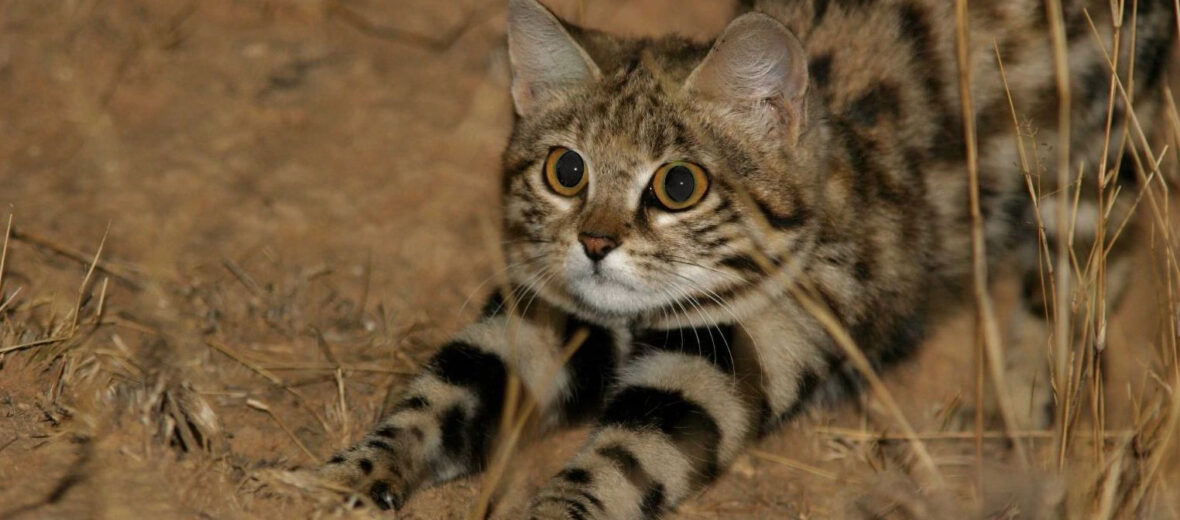
Noted as the deadliest cat in the world, with a kill ratio of 60%, we have the Gyra aka the black-footed cat. This cute little critter’s hunting prowess bests even lions and cheetahs by a whopping 40%! They are also cute as heck! You would think that these ferocious hunters would be as large as your typical big cat. But they are smaller than a typical house cat.
First the Stats…
Scientific name: Felis nigripes
Weight: Up to 4 lbs.
Length: Up to 17 inches, plus their tail
Height: Up to 9.8 inches
Lifespan: Up to 10 years
Now on to the Facts!
1.) The black-footed cat is nocturnal (active at night). They also travel up to 5 miles a night to find food.
2.) Gerbils, shrews, birds, mice, reptiles, and insects are their main prey.
3.) They are able to kill and consume up to 10+ prey animals per night. Not bad for being so small.
4.) Being well adapted to desert life, they rarely drink standing water, instead getting their hydration from the food they eat.
5.) Gyras are solitary, like many cats. They typically occupy an 8 square mile area that can overlap neighboring female’s territory.
But wait, there’s more on gyra!
6.) The gyra is also called miershooptier. This means anthill tiger in Africaans.
7.) They have a pretty wide open breeding season from July – March.
Did you know…?
Gyra are so agile at hunting that they can catch a bird in mid flight!
8.) Gestation (pregnancy) lasts between 60 – 70 days and results in 1 – 3 kittens.
9.) Not unlike house cats, kittens are able to walk by 2 weeks of age, eat solid food by 1 month, and to start venturing out on their own at the age of 4 – 5 months.
10.) Dogs, caracals, and jackals are the main predators of black-footed cats.
Now a Short Gyra Video!
Also, check out the Critter Science YouTube channel. Videos added frequently!
Want to suggest a critter for me to write about? Let me know here.



